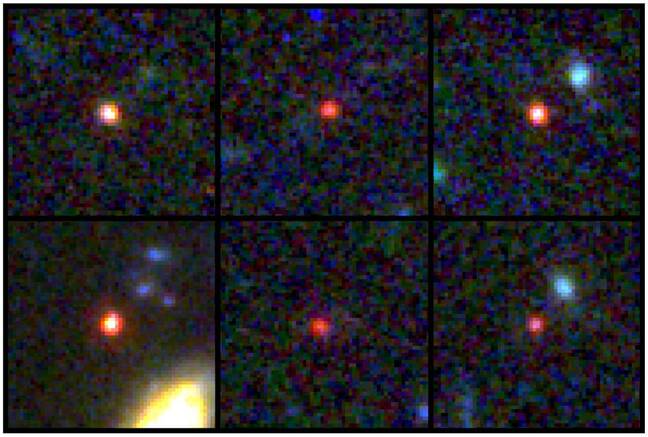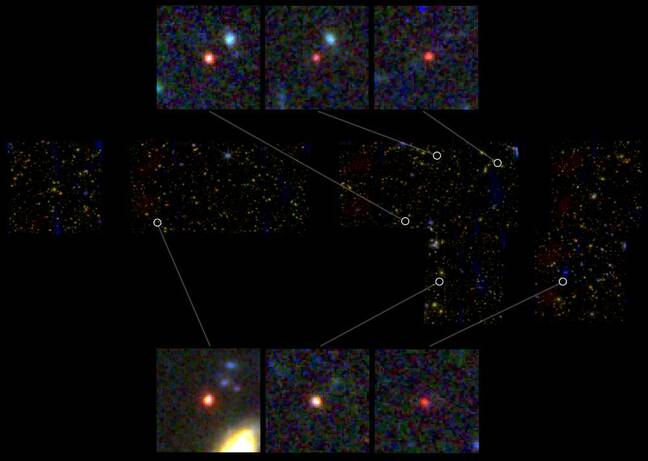This article is more than 1 year old
Light from a long time ago reaches James Webb Space Telescope
Galaxies got big much sooner than expected, new observations
Formed between 500 and 700 million years after the Big Bang, objects at the extreme limits of human observation have showed up on the James Webb Space Telescope (JWST), designed to uncover the early life of the 13.8 billion-year-old universe.
The observations are part of the first release of data from NASA's $10 billion space gadget that show galaxies more massive than had been expected for this early point in time.
Prior to the result, galaxies with stellar masses as high as 100 billion times that of the Sun have been identified from one billion years after the Big Bang, but no earlier.
The team led by Ivo Labbe, astrophysics professor at Australia's Swinburne University of Technology, used the JWST to target galaxies with a high redshifts (z = 6.5 and z = 9.1), meaning they were within the first 750 million years of cosmic history.

Above and below: Images of six candidate massive galaxies, seen 500-800 million years after the Big Bang. One of the sources (bottom left) could contain as many stars as our present-day Milky Way, but is 30 times more compact. These images are a composite of separate exposures taken by the James Webb Space Telescope using the NIRCam instrument using several filters. Credits: NASA, ESA, CSA, I. Labbe (Swinburne University of Technology). Image processing: G. Brammer (Niels Bohr Institute’s Cosmic Dawn Center at the University of Copenhagen). Click to enlarge
Redshift indicates how fast the universe is expanding and is caused by the Doppler effect moving light to the red end of the spectrum. The higher the redshift, the further away an object is and the longer the light takes to reach Earth.
The researchers found six candidate massive galaxies with redshifts between z = 7.5 and z = 9.1 with masses up to 10 billion times that of our Sun, including one galaxy with a possible stellar mass 100 billion times that of the Sun, according to a study published in Nature.
"These objects are way more massive than anyone expected," said Joel Leja, assistant professor of astronomy and astrophysics at US Penn State University, who modeled light from these galaxies.
"We expected only to find tiny, young, baby galaxies at this point in time, but we've discovered galaxies as mature as our own in what was previously understood to be the dawn of the universe."
- Durham Uni and Dell co-design systems to help model the universe
- This ancient quasar may be the remains of the first-gen star that started us all
- Large Hadron Collider experiment reveals three exotic particles
- James Webb Space Telescope has arrived at its new home – an orbit almost a million miles from Earth
The result suggests galaxies early in the universe's history grew massive more quickly than previously thought. However, scientists want to verify the finding with spectroscopy, which studies the absorption and emission of light in chemistry.
The discovery shows objects as mature as the Milky Way, our own galaxy, during a period when the universe was a little more than 3 percent of its current age. But Leja suggests they may not be galaxies at all.
"This is our first glimpse back this far, so it's important that we keep an open mind about what we are seeing. While the data indicates they are likely galaxies, I think there is a real possibility that a few of these objects turn out to be obscured supermassive black holes. Regardless, the amount of mass we discovered means that the known mass in stars at this period of our universe is up to 100 times greater than we had previously thought. Even if we cut the sample in half, this is still an astounding change," he said in a statement. ®

